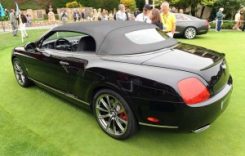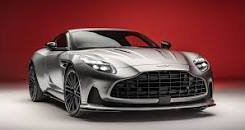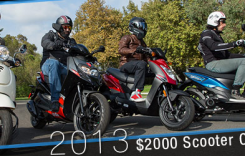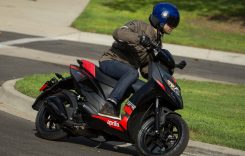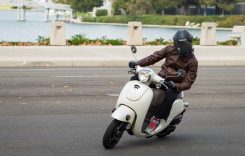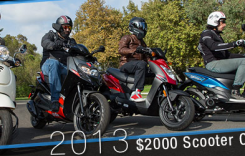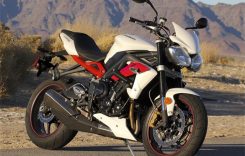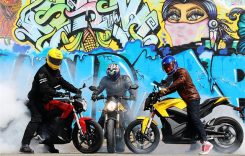Does DS stand for “Dirty S?”
Researching Zero’s updated and medicated 2015 DS electric motorcycle, I noted a comment made about another online review. “E-vehicles will never be significant in the marketplace until their price comes down to about a quarter of the cost of a similar new ICE (internal combustion) vehicle.” That means the bike I’m reviewing here needs to cost $1999 new before it will sell in significant numbers.
The commenter’s logic was obtuse, but though similar comments are less extreme – cost parity is what the naysayers often demand – the idea is the same. EVs should cost less than ICE-rs because they are somehow less than an internal combustion vehicle. But what EV manufacturers want you to understand is that they are actually more, not less. More comfortable, more fun, easier to ride fast and, best of all, they offer more performance for the kind of riding a street rider actually does. Riding the updated DS highlights these advantages. Yeah, 40 miles doesn’t sound like a lot, but for riders in dense urban areas, such as the San Francisco Bay Area where I live, an 80-mile round trip gets me to almost everywhere I need to go.

DS’ narrow profile and long-travel suspension deliver plenty of ground and cornering clearance.
Getting there is all the fun when it comes to motorcycles, so for 2015 Zero addressed some of the glaring faults in its entire lineup. Before this year, there was no ABS, the damper-rod Showa suspension (though better than the not-ready-for-primetime FastAce equipment of prior years) was still lacking and we can always use more range. The busy beavers in Santa Cruz gnawed out some improvements – upgraded brakes with ABS, adjustable cartridge fork (with a hip hollow axle) and there are even radial tires on the high-performance SR model.
I haven’t spent much time on the Zero DS dual-sport model, so I asked for a few weeks with the bike to see if it could win my love. We tested one back in 2010, and it was much more of a road-legal dirtbike back then. It had wire wheels, full knobby tires and was over 100 pounds lighter – at the expense of much lower top speed and a range (about 25-30 miles) that wouldn’t impress an electric golf cart owner. It’s changed plenty since then, and is basically the same machine as the Zero S, except with longer-travel suspension (7 inches front and back), a 19-inch front wheel shod with a Pirelli MT-60, and a few other small differences. Like the S, you can choose between a 9.4 or 12.5 kWh battery offering an estimated combined highway/city range (according to the SAE’s J2982 Riding Range Test Procedure) of 78–104 miles.
What kind of adventure tour can you have, limited to double-digit mileage? Probably a pretty good one if you live on an island, but the idea of touring on an electric motorcycle is silly, unless you seriously modify your ride or have somebody follow you with a generator. But most adventure-styled motorcycles don’t spend that much time adventuring, either. Their wind protection, comfortable riding positions and luggage capacity make them ideal for commuting, fun day trips, or even grocery-store runs. The DS is good at that stuff, too.

A low, low, low center of gravity and predictable, smooth power delivery make the Zero a good choice for novice dirtbikers.
How is it in the dirt? The DS isn’t really a dirtbike – look to the wicked-fun FX model to scratch that particular itch – but more an electric version of a bike like the Kawasaki Versys or BMW F700GS. And why not? Adventure-styled bikes are hot hot hot these days, the moto equivalent of Channing Tatum’s abs.
I’m no dirt-bike guru. In fact, about all I can do off-road is pose for photos without dropping the bike, but even I, with my Mr. Magoo-like abilities can see the value of that ultra-tunable and flexible motor. The Zero’s incredibly low center of gravity and measured, infinitely controllable power delivery made riding in the dirt a lot less worrisome than it is when I ride a big adventure-tourer like a BMW or Moto Guzzi. Acceleration is predictable and builds in a linear fashion – perfect if you’re nervous about riding a $14,000, 413-pound motorcycle off pavement. I found my confidence soared – even after a brief jaunt on dirt roads, I wanted to get dirtier. Exploring fire roads should be fun and easy, even for newbies, but experienced dirt riders may want a powerband that allows them to break traction more like an ICEr.

Zero DS’ low handlebar makes standing up on the pegs tough on taller folks.
The DS is equally adept on paved roads. Its 54 claimed horsepower isn’t a lot, but 68 lb-ft of torque is, enough to rival some open-class Twins. More importantly, that torque is (in theory) available at just 1 rpm, though Zero has carefully tuned the controller’s software to make it feel like an internal-combustion engine, albeit a very smooth and tractable one. The rider can even mildly tune throttle response using his or her smartphone, adjusting each mode (Sport, Eco or Custom) to suit his needs. What it all adds up to never having to shift gears or worry about powerband, but without the lagging power or compromised gearing you’d find with a CVT or automatic transmission.
That flexibility means the DS will go as fast as you need it to. Whipping in and out of city traffic is no problem and riding on a twisty road is easier than playing an early-’80s racecar videogame. The smooth, perfect throttle response pairs nicely with the direct-drive power delivery. It’s what motorcycles should have been 100 years ago, but instead we’ve been cursed with the ball-and-chain of clutch and transmission. Sport riding on an electric motorcycle is a life-changing experience, as you only need focus on finding the perfect entry speed and line through a turn, without worrying about gears, noise or abrupt throttle input.
